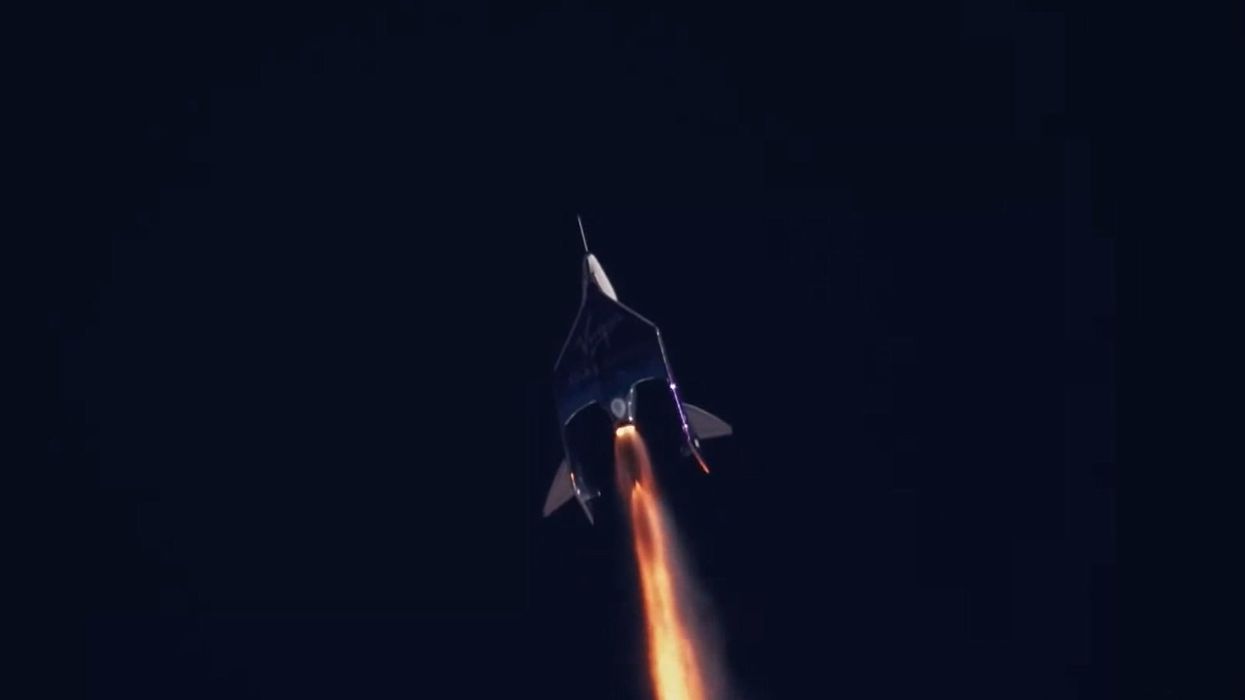Ellie Abraham
Sep 14, 2023
Virgin Galactic's first space tourism flight lands safely back to Earth
Virgin Galactic
Archaeologists have been left livid after ancient remains of human relatives were sent to the edge of space.
In a scientific first, the fossilised remains of ancient human relatives were carried onboard aboard a Virgin Galactic flight on 8 September.
The fragmentary remains came from Australopithecus sediba and Homo naledi, who are both closely related to the human species and experts have said that taking them to the edge of space constitutes a major ethical breach.
They were taken by South African-born billionaire Timothy Nash in a tube, aboard the Virgin Galactic flight that departed from Spaceport America in New Mexico.
Lee Berger, a National Geographic Society explorer in residence and the director of the Centre for the Exploration of the Deep Human Journey at the University of the Witwatersrand in South Africa, is one of the key people involved in uncovering the existence of the species.
Berger chose the fossils for Nash to take onboard and his decision has split the world of science and archaeology. The remains included a 2 million-year-old fragment of the collarbone of A. sediba and a thumb bone from H. naledi dating back 300,000 years.
In a statement, Berger said: “The journey of these fossils into space represents humankind’s appreciation of the contribution of all of humanity’s ancestors and our ancient relatives. Without their invention of technologies such as fire and tools, and their contribution to the evolution of the contemporary human mind, such extraordinary endeavors as spaceflight would not have happened.”
But, archaeologists disagree, arguing that that they would not have understood their journey into the atmosphere and that their remains should not have been taken there.
In a X/Twitter thread by Alessio Veneziano, a biological anthropologist and co-organizer of the AHEAD conference (Advances in Human Evolution, Adaptation and Diversity), he outlined some of the reasons why the community is frustrated.
Why does sending hominin specimens into space raise so much indignation? A short thread with some of the reasons that appear from reading people's opinions. (1/5)\n\nRead and comment to add your thoughts!\n\n#HumanEvolution #PaleoAnth #BioAnth #BioArch #hominins #AHEAD23— AHEADmeeting (@AHEADmeeting) 1694440896
In one post, he argued: “It speaks loudly about entitlement and privilege in a field where many people have difficulties accessing fossil material for proper scientific research.”
It has also been argued that there was no scientific justification for the flight. According to Justin Walsh, a professor of art and archaeology at Chapman University in California, the effect of spaceflight on ancient remains “hasn't been an area of scientific study”.
Sonia Zakrzewski, a bioarchaeologist at the University of Southampton, had a similar reaction arguing, “I am horrified that they were granted a permit. This is NOT science” and suggesting that she could use the case to teach about ethics in her classes.
Sign up to our free Indy100 weekly newsletter
Have your say in our news democracy. Click the upvote icon at the top of the page to help raise this article through the indy100 rankings.
Top 100
The Conversation (0)














